We’ve all experienced it – the challenge of finding the perfect words and structure for an email to a teacher. It appears to be an easy task, but it carries the potential to create a favorable impact or to have your message disappear into the virtual void.
But fear not, as we've compiled some essential tips and strategies to help you navigate this seemingly daunting task with ease and grace.
Whether you're seeking clarification on an assignment or expressing gratitude for their guidance, mastering the art of email etiquette with your teachers is an invaluable skill that can pave the way for effective communication and mutual respect.
Key Takeaways
- Craft a clear subject line that indicates the email's content and includes relevant details.
- Maintain a respectful and professional tone throughout the email, using polite and courteous language.
- Consider the timing and urgency of the email, respecting the teacher's working hours and workload.
- Pay attention to formality and detail in the email, including addressing the teacher correctly and ending the email professionally.
Clear Subject Line
Crafting a clear subject line is essential for effective communication and helps us, as students, ensure that our emails are promptly and efficiently addressed by our teachers. When writing an email to a teacher, the subject line plays a crucial role in conveying the purpose of our message. It should be detailed yet concise, providing a clear indication of the email's content.
By including our name, class, and a specific topic or request in the subject line, we enable our teachers to quickly identify and prioritize our emails amidst their often overwhelming influx of messages.
A well-crafted subject line not only grabs the teacher's attention but also aids in managing their email correspondence more efficiently. It allows them to understand the urgency and relevance of our message at a glance, increasing the likelihood of a prompt response. Conversely, vague or generic subject lines can lead to our emails being overlooked or delayed.
Therefore, by taking the time to formulate a clear and informative subject line, we can facilitate effective communication and demonstrate our respect for the teacher's time and attention.
Proper Greeting

When addressing a teacher in an email, it's important to begin with a proper greeting that reflects respect and professionalism, such as 'Dear Mr./Ms./Mrs. [Last Name]'. Using the appropriate title and last name of your teacher is essential to show respect and maintain a formal tone. For example, if addressing a teacher named Smith, the greeting should be 'Dear Mr. Smith' or 'Dear Ms. Smith'. It's crucial to avoid overly casual language and greetings, such as using first names unless specifically permitted by the teacher.
In a formal email, it's important to start with a respectful and appropriate greeting. In a high school setting, a proper greeting sets the tone for the entire email and demonstrates maturity and professionalism. When unsure about the teacher's title or the spelling of their name, it's advisable to double-check to ensure accuracy. Additionally, it's essential to maintain a respectful and formal tone throughout the email, not just in the greeting. This includes using a formal closing, such as 'Sincerely' or 'Best regards', to conclude the email. Keeping your tone respectful and professional is crucial to making a positive impression on your teacher.
Whether it's the start of the day or not, 'Good morning' is a polite and appropriate greeting that can be used in the opening of an email.
Formal Structure
As we move on to the subtopic of 'Formal Structure', it's crucial to emphasize the importance of a clear subject line that encapsulates the email's purpose.
Additionally, addressing your teacher with the appropriate salutation, such as 'Dear Mr./Ms./Mrs. [Last Name]', sets a professional tone for the communication.
These points are fundamental in ensuring that the email is respectful, concise, and effective in conveying your message to your teacher.
Subject Line Importance
After careful consideration, we have crafted a formal and informative subject line to ensure the importance and relevance of our email is clearly conveyed to the teacher. A well-structured subject line is crucial in conveying professionalism and respect, aiding in the effective organization and prioritization of emails. Here is an example of how a subject line should be formatted:
| To: [Teacher's Full Name] | Subject: [Your Full Name – Class/Subject – Specific Topic/Purpose] | Importance: High |
|---|---|---|
| Element | Relevance | |
| Subject Line | Clearly states the purpose of the email, including your name, class, and assignment title. | |
| Body of the Email | Focuses on the main point, avoiding unnecessary information. | |
| Closing Remarks | Concludes with a polite expression of gratitude. |
Respectful Tone

Maintaining a respectful and professional tone throughout the email demonstrates consideration for the teacher's position and time, ensuring effective communication. When composing an email to your teacher, it's crucial to convey a respectful tone to show appreciation for their expertise and time.
To achieve this, we should:
- Begin the email with a formal salutation, such as 'Dear Dr./Mr./Mrs./Ms.' to address the teacher respectfully.
- Use polite and courteous language throughout the email, avoiding slang and informal expressions.
- Express gratitude for the teacher's assistance and guidance, showing appreciation for their efforts.
- Close the email with a formal sign-off, such as 'Sincerely' or 'Best regards,' to maintain a professional and respectful tone.
In addition, when seeking an in-person meeting or additional support during the teacher's office hours, it's essential to communicate our request with a respectful and considerate tone. Remember, teachers are busy people, and demonstrating a respectful tone in our emails shows our understanding of and respect for their time and commitments.
Appropriate Salutation

Addressing a teacher with the appropriate salutation sets a respectful and professional tone for the email communication. When initiating an email conversation with a teacher, it's essential to use an appropriate salutation to convey respect and professionalism.
The most common salutations include 'Dear Mr./Ms./Mrs. [Last Name]' or 'Hello, Professor [Last Name].' It's important to avoid using overly casual or informal greetings such as 'Hey' or addressing the teacher by their first name unless given permission to do so.
For college students, it's crucial to maintain a level of formality when addressing their instructors. Additionally, it's essential to double-check the spelling of the teacher's name to ensure accuracy and show attention to detail.
The appropriate salutation not only sets the tone for the email but also demonstrates courtesy and consideration. Remember to use the appropriate salutation at the beginning of the email and to end the email professionally, especially when communicating with teachers via email.
Timing of Email
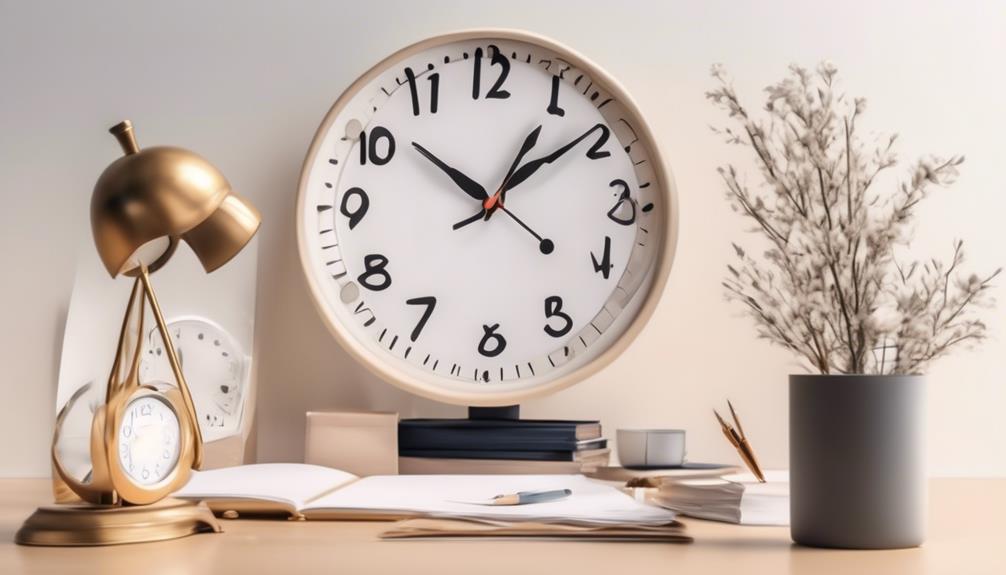
When emailing a teacher, it's important to consider the timing of your email. We should be mindful of the teacher's working hours and try to avoid sending emails outside of those times.
We should also consider the urgency of our email and allow a reasonable amount of time for a response before following up.
Emailing Outside Office Hours
Considering the best time to email a teacher is crucial for ensuring timely and respectful communication. When emailing teachers, it's essential to keep timing in mind. Here are some important factors to consider:
- Be mindful of the teacher's working hours and personal time, and avoid sending emails on weekends or holidays.
- Allow 1-3 days for a response before considering a follow-up email, respecting the teacher's workload and schedule.
- Avoid emailing time-sensitive questions less than 24 hours before needing an answer, considering the teacher's availability and time constraints.
- If necessary, schedule a meeting during office hours for complex questions or in-depth discussions.
It's important to be clear and respectful in your communication, giving the teacher the time needed to respond to your email. For further guidance, refer to the school website's communication guidelines.
Response Time Expectations
We should be mindful of the teacher's schedule and avoid emailing during non-working hours when discussing response time expectations for email communication. It's important to respect the teacher's time and workload. Here's a table to guide you in understanding response time expectations when emailing teachers:
| Response Time | Expectations | Best Practices |
|---|---|---|
| Less than 24 hours | Avoid expecting an immediate response | Reserve urgent matters for in-person discussion |
| 1-3 days | Respect the teacher's workload | Allow ample time for a thoughtful response |
| Weekends/Holidays | Adjust your expectations | Be patient and considerate of the teacher's personal time |
Being considerate of the teacher's schedule and workload is crucial for effective communication. Understanding and respecting response time expectations can lead to more meaningful interactions with your teachers.
Urgency of Email
Understanding the importance of respecting the teacher's schedule and workload, it's crucial to consider the urgency of email timing when communicating with educators. When it comes to the urgency of an email, there are several key points to consider:
- Avoid sending emails late at night, during weekends, or holidays to respect the teacher's schedule.
- If your email is time-sensitive, try to send it during the teacher's working hours, typically in the morning before school or towards the end of the afternoon.
- Allow 1-3 days for a reply before sending a follow-up email, respecting the teacher's workload and response time.
- Be mindful of the urgency of your email and consider whether it can wait until the next class or office hours, avoiding last-minute requests whenever possible.
It's important to communicate the urgency of your email in the subject line or opening of the message if necessary to prompt a timely response.
Starting the Email

With the utmost respect, I'm writing to discuss a matter of great importance.
When starting an email to a teacher, it's crucial to craft a clear and specific subject line that succinctly summarizes the purpose of the email. This helps the teacher to understand the content and urgency of the message.
Additionally, using a polite and formal greeting is essential. Address the teacher with 'Dear Mr./Ms./Mrs. [Last Name]' to show respect. Personalize the greeting by using the teacher's name, and double-check the spelling to avoid any errors. It's important to maintain a formal tone in the greeting and avoid over-casual language or using first names unless permitted by the teacher.
Furthermore, starting the email with a clear and concise introduction of the purpose for writing is crucial. Make sure to express the reason for writing the email in a respectful and formal manner. Always use the teacher's official email address and ensure that the email is free from any informal language or abbreviations.
Email Body
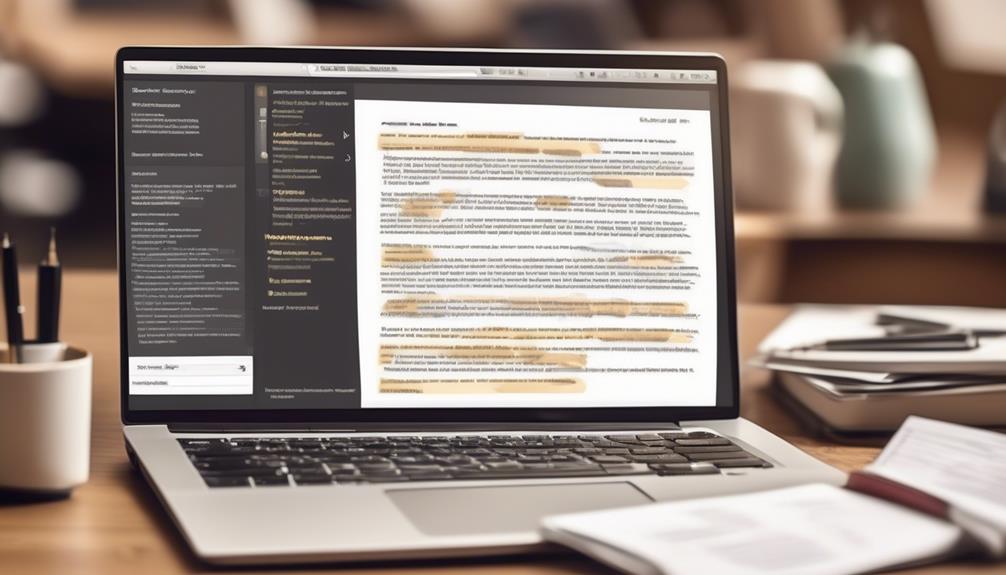
Upon addressing a teacher formally with 'Dear Mr./Ms./Mrs. [Last Name]' in the email body, it's crucial to provide clear and concise context for the purpose of the email.
When writing an email, make sure to use a subject line that clearly summarizes the content of the email.
In the email body, help a teacher understand the reason for your email by providing relevant information and avoiding ambiguity.
If you need to write a lengthy email, consider using bullet points or numbered lists to organize your thoughts and make it easier for the teacher to follow.
It's important to let them know if you're asking for specific assistance, clarification on a topic, or addressing a concern.
When expressing concerns or asking questions, ensure that the email is straightforward and concise.
End the email with a polite expression of gratitude, especially if you're requesting a favor.
Following these tips for students will help you craft a professional and effective email to your teacher.
Structure and Format
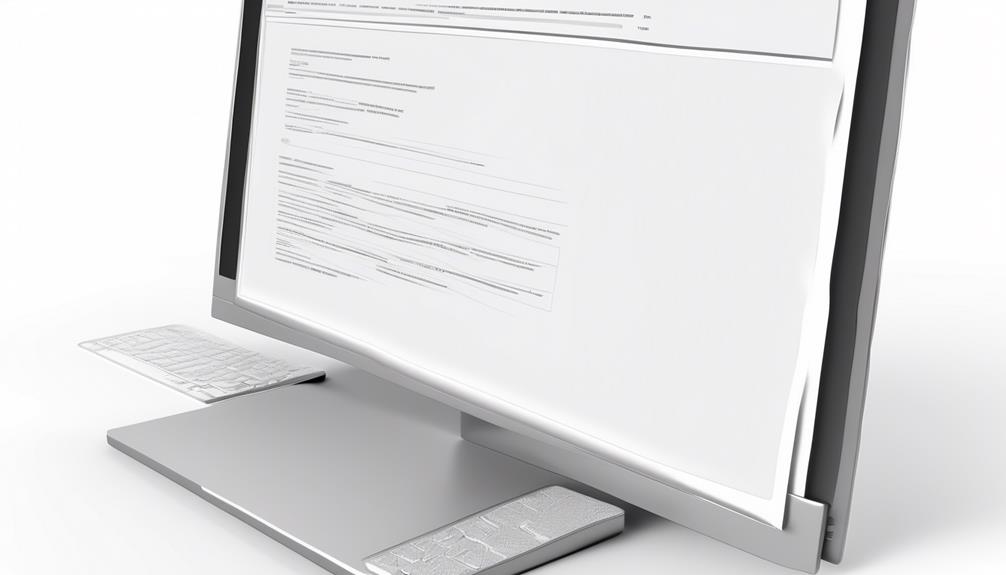
When crafting an email to a teacher, it's crucial to consider the structure and format for effective communication.
This includes attention to the subject line clarity and proper greeting etiquette, which sets the tone for the rest of the email.
Subject Line Clarity
We consistently prioritize utilizing a subject line that succinctly encapsulates the content of the email, including our name, class, and specific purpose, to effectively capture the teacher's attention.
When emailing your teacher, a clear subject line is crucial. To ensure subject line clarity, make sure the subject reflects the urgency or importance of your message. Avoid vague or generic subject lines that may get overlooked. Proper formatting and capitalization enhance clarity and professionalism.
Before sending an email, double-check the subject line for accuracy and relevance. A well-structured subject line not only grabs attention but also conveys professionalism and respect for the recipient's time. Therefore, pay attention to details such as spelling mistakes and ensure the subject line is within 5-7 words for optimal impact.
Proper Greeting Etiquette
To convey respect and professionalism, it is essential to commence the email with a formal salutation, such as 'Dear Mr./Ms./Mrs. [Last Name],' setting the tone for effective communication with your teacher. It is crucial to address your teacher with the appropriate title and last name, ensuring a respectful tone from the beginning. Below is a table outlining the proper greeting etiquette for writing an email to a teacher.
| Aspect | Description | Example |
|---|---|---|
| Salutation | Use 'Dear' followed by the teacher's title and last name. | Dear Mr. Smith |
| Formal Language | Maintain a formal tone and address the teacher respectfully. | Avoid using casual language or slang. |
| Clarity and Politeness | Clearly state the purpose of the email and express gratitude if necessary. | Thank you for your time and assistance. |
Adhering to these guidelines will ensure your email conveys professionalism and respect to your teacher.
Tone of Voice

In composing an email to a teacher, it's essential to maintain a tone that's both respectful and professional. The tone of voice in your email sets the stage for the entire message, so it's important to choose your words carefully. Here are some key points to consider when it comes to the tone of voice in your email:
- Avoid Overly Casual Language: Refrain from using slang or overly informal language that may come across as disrespectful or unprofessional.
- Politeness and Gratitude: Use words and phrases that convey politeness and gratitude, such as 'please' and 'thank you,' to show respect for the teacher's time and attention.
- Consider the Teacher's Responsibilities: Be considerate of the teacher's workload and responsibilities, and frame your message in a way that demonstrates understanding and empathy.
- Reflect Respect and Courtesy: Pay attention to the overall tone of your email to ensure it reflects a respectful and courteous attitude towards the teacher.
Attachments
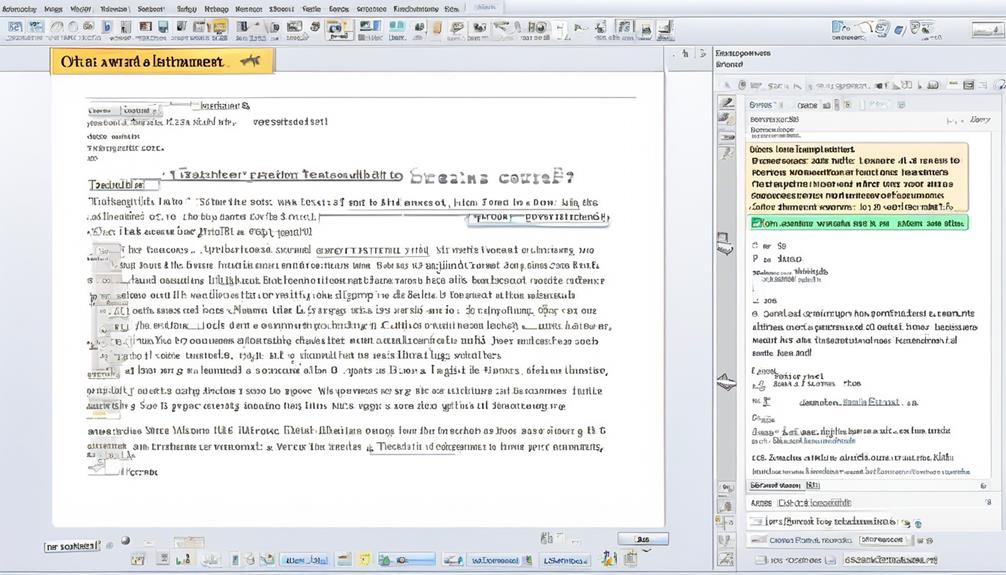
Maintaining a respectful and professional tone in email communication with a teacher is crucial. When including attachments, it's important to clearly label them to avoid confusion and specify their relevance to the content of the email.
For instance, if sending a research paper, the attachment should be labeled as 'Research Paper – [Your Name]' to clearly indicate its purpose. Additionally, in the body of the email, provide a brief explanation of the attachment, such as 'Please find attached my completed research paper for your review and feedback.' This ensures that the teacher understands the reason for the attachment without having to guess its relevance.
If emailing a teacher for a letter of recommendation, the attachment should be labeled as 'Letter of Recommendation Request – [Your Name].' It's also essential to double-check that the attached files are the correct ones before sending the email. When in doubt, it's always acceptable to ask a teacher if the attachment is necessary, especially when it comes to sensitive documents.
Closing the Email
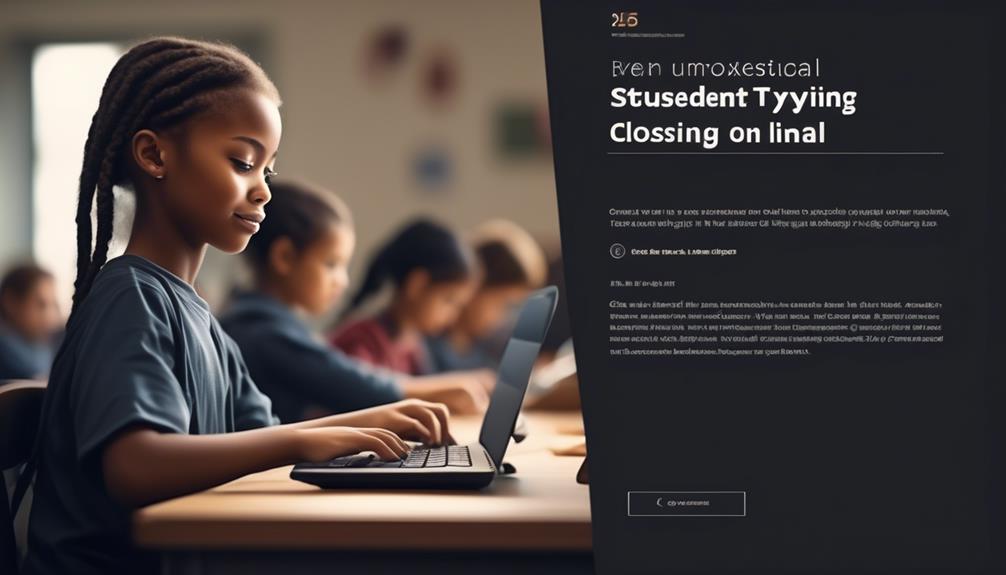
Closing an email to a teacher requires a respectful and professional sign-off, expressing gratitude for their time and consideration. When concluding your email to a teacher, it's crucial to maintain a formal and courteous tone. Here are essential points to consider when closing the email:
- Use a polite and professional sign-off, such as 'Sincerely,' 'Best regards,' or 'Thank you,' to convey respect and appreciation.
- Include your full name, class, and institution in the closing to provide context and clarity for the teacher.
- Avoid using casual or overly familiar closings, such as 'Cheers' or 'Thanks,' as it's important to maintain a respectful and professional tone in your communication with your teacher.
- Express gratitude for the teacher's time and consideration. Showing appreciation for the teacher's dedication and assistance can leave a positive impression.
What are the differences in the writing approach when emailing a teacher versus someone you don’t know?
When writing an email to a teacher, the tone should be respectful and formal, using proper salutations and language. However, when writing an email to a stranger, it’s important to be polite but a little more casual, giving a brief introduction and stating the purpose of the email clearly.
Frequently Asked Questions
How Do You Start an Email to a Teacher?
We typically start an email to a teacher with a polite and formal greeting, like 'Dear Mr./Ms./Mrs. [Last Name].'
Then, we introduce ourselves and clearly state the purpose of our email in the opening lines. It's important to be concise and structured in the message to ensure clarity.
Lastly, we end the email with a polite closing, such as 'Sincerely,' and include our full name, class, and institution.
What Does a Good Email to a Teacher Look Like?
A good email to a teacher looks respectful, concise, and clear. It should have a formal salutation and a clear subject line.
Polite and respectful language is crucial, along with a focused main point. Always proofread for professionalism.
In crafting an email to a teacher, we must aim for clarity, respect, and professionalism, ensuring our communication is effective and reflective of our commitment to academic excellence.
How Do I Write an Email to My Child's Teacher?
When writing an email to my child's teacher, we should begin by addressing the teacher respectfully and clearly stating the purpose of our email.
We need to use proper grammar and punctuation and be concise in our communication.
It's important to be polite and professional in our tone and to avoid using slang or informal language.
Additionally, we should always proofread our email before sending it to ensure it's clear and error-free.
How Do I Send an Email to a Teacher on Gmail?
We've found that 26% of teachers prefer to receive emails from students through their school-provided Gmail accounts.
To send an email to a teacher on Gmail, simply log in to your account, click on the compose button, enter the teacher's email address, write a clear and respectful message, and hit send.
Remember to use proper grammar and punctuation, and to address the teacher with appropriate formality.
Conclusion
In conclusion, writing an email to a teacher is a piece of cake! Just remember to follow all the guidelines, be clear and concise, and always maintain a respectful tone.
It's as easy as pie! So next time you sit down to compose an email to your teacher, just keep these simple tips in mind and you'll be golden.
Happy emailing!










